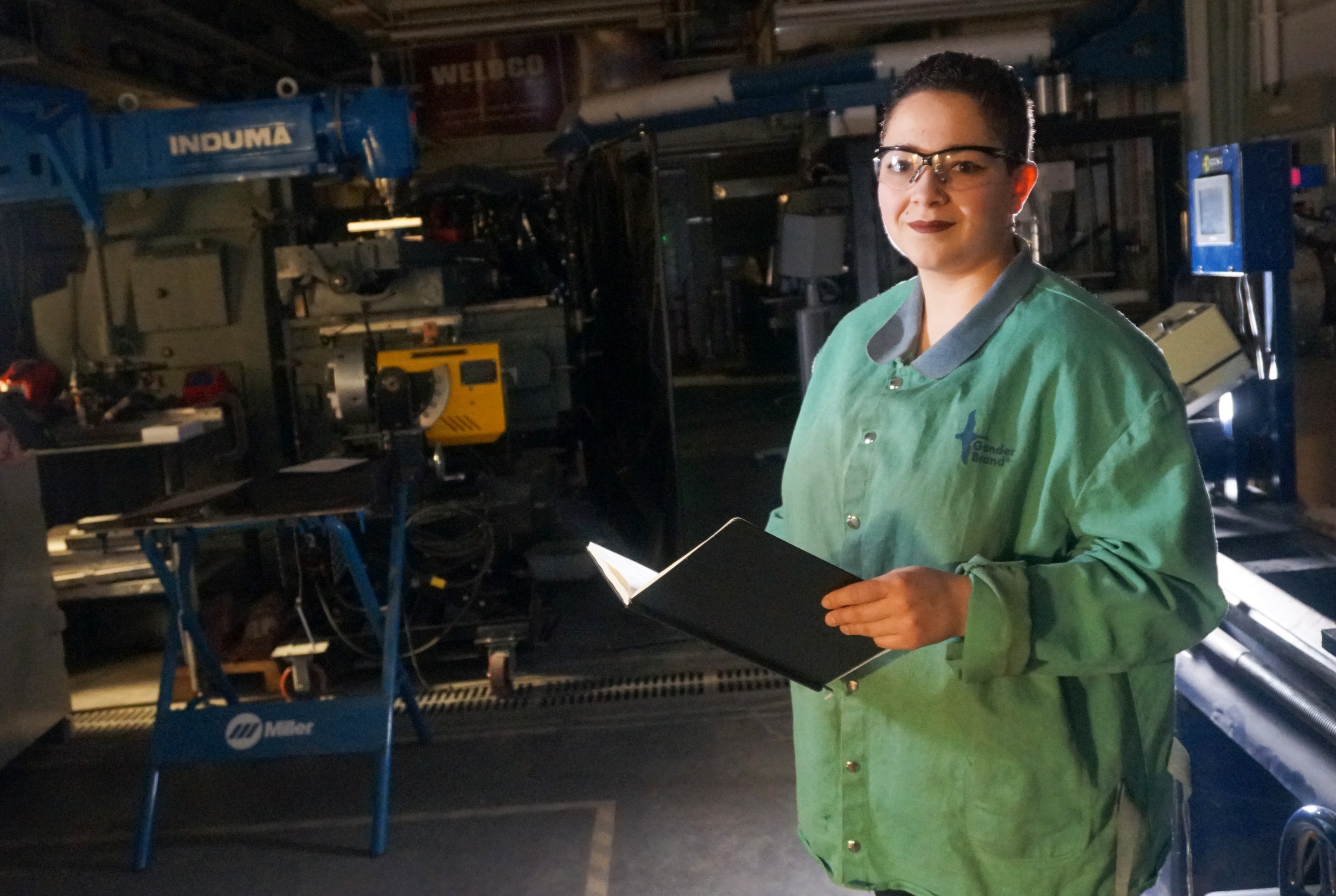
"When I first heard about environmental engineering I could see how it can help people," environmental engineering graduate student Emily Quecke says. Working in the Engineering at Alberta Canadian Centre for Welding and Joining, the UAlberta SWAMP Lab and with the Department of Medicine, she's investigating pollutants associated with welding and their impact on workers.
(Edmonton) Safety and risk management need to be at the forefront of any engineer's work. It just so happens that it is also at the heart of an Engineering at Alberta student's research into the emission factors of toxic pollutants from welding.
Emily Quecke, who's working on her Master's degree in environmental engineering, is launching a research project to examine welding emissions.
The findings could protect workers and others from the effects of the fumes, which can be thick with metals and chemicals.
"Some welding fumes are carcinogenic, and that's a main concern, and others have more acute toxicity," said Quecke. "With certain types of welding you can get something called metal fume fever. Its symptoms are similar to a cold, but it's brought about by certain metals, such as zinc. Welders can suffer from a variety of respiratory and cardiovascular diseases from fume exposure."
Taking measurements in the Canadian Centre for Welding and Joining and analyzing the samples at the U of A's SWAMP Lab, Quecke will measure how many grams of fume are produced by different types of welding. She'll identify and measure amounts of specific metal fumes and possibly some gases such as ozone and nitrogen oxides.
The U.S. Environmental Protection Agency (EPA) has conducted baseline measurements of fumes from some types of welding. That work was produced in 1995 and, while it at least provided a benchmark, even the EPA has expressed doubts about its reliability. Working under the supervision of environmental engineering professor Zaher Hashisho and Department of Medicine professor Bernadette Quemerais, Quecke hopes to gather information that contributes to worker safety and public health.
"We're hoping to make the data better than what's available now and fill the gaps where there is no information now," she said.
Quecke has been intrigued by air quality and health since she was a child. Her family doctor speculated that she, and many other kids, developed asthma because they were exposed to freon, a chemical used in refrigeration at older indoor skating rinks.
She began to dwell on the idea that there was no exact cause for her asthma and was troubled by the fact that even if there were something in the air, it was invisible.
As an engineer, she's now able to use technology to see what's in the air and have a positive impact on people's lives.
"When I first heard about environmental engineering I could see how it can help people," she said. "It seemed so obvious to me, that I can help people and the environment and the world we live in-why would I not?
"Clean air is something we take for granted and overlook, and I want to do my part."